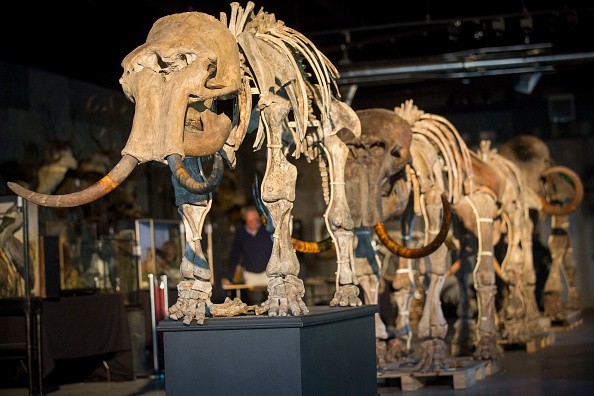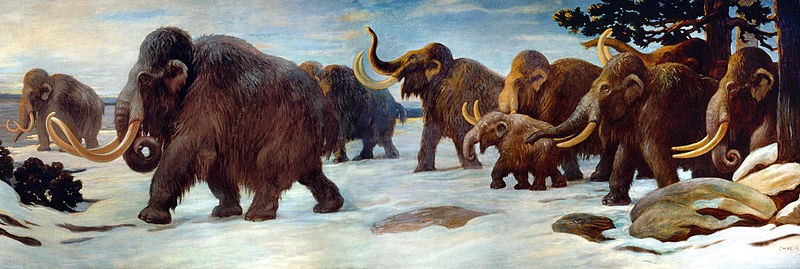The most famous extinct creatures are being brought back thanks to genetic engineering by a Texas start-up. However, according to Tom Ough, the eventual reappearance of the woolly mammoth raises some moral dilemmas. Which supermarket will be first in line to stock certain of these, specifically?

Woolly Mammoth Going Extinct
The last known woolly mammoth died about 3,900 years ago on mainland Siberia. Since then, humans have only had contact with mammoths through their skeletal remains and the frozen bodies of a few individuals that still contain some of their once-shaggy furs. These remnants have piqued our interest for centuries-a desire that one day could be satisfied.
To save the species, Texas-based start-up Colossal Biosciences is employing genetic engineering. The firm claims that "the woolly mammoth was the keeper of a healthy earth." Colossal would genetically modify Asian elephants, the closest living relative of the species, using rescued mammoth DNA.
If its plans work out, it will manufacture a woolly mammoth in six years, or as near to a copy as feasible. The business has received $75 million from investors this year.
Also Read : Can Science Bring Back Extinct Species
Studying the Megafauna

A species that has never seen a large animal that it didn't enjoy the idea of eating may thus reconnect itself with humans around 3,906 years after they believed they had seen the last of us. Although the end of the ice age drastically restricted the amount of their potential habitat, humanity did contribute to their extinction.
However, some paleontologists contend that prehistory is strewn with the remains of megafauna we have eaten to extinction. Whoever was presenting Planet Earth in those days would have had to be on their toes with huge sloths, giant armadillos, and dire wolves.
We may also address the blatantly obvious question of whether or not we should eat them, given the apparent advancement in the field of mammoth reconstruction. This possibility has not been addressed by Colossal, which has instead focused on the environmental advantages of mammoth restoration: the animal's heavy gait thickens permafrost, or the permanently frozen layer of soil, gravel, and sand beneath the Earth's surface, preventing it from melting and emitting greenhouse gases.
However, one worries if people would be persuaded to sample it like their forefathers were. At some time, we will have to choose whether or not we want to consume the woolly mammoth and any other species we choose to revive.
Eating the Giant
Director of Regenerative Food and Farming Holly Whitelaw says she would be willing to do it. Whitelaw said, "I would eat anything that was ethically grazed."
Animals that roam, according to her, are good for the soil because they spread seeds and microorganisms. The more grassland the Arctic soil can sustain and the more carbon is drawn out of the atmosphere, the better. As Whitelaw says, "It's like bringing the wolves back. You make the entire layer of the system perform better once again."
Dr. Herridge voiced more reservations regarding the origin of these mammoths in an interview with The Independent. She claims, "I have an issue with anything to do with surrogate moms. The genetically altered mammoth amalgams will cause severe discomfort and medical risks for Asian elephants during pregnancy.
These concerns the enterprise itself, not the notion of devouring mammoth meat after it. Dr. Herridge believes this is improbable.
Feasibility and Ethics
According to Whitelaw, mammoths grown on pasture would have a favorable ratio of omega:3 to omega:6 fats, making it a healthy food option. Given this, it's simple to picture Paleo aficionados satisfying customer demand. But Dr. Herridge is once again doubtful. She claims it is "very challenging" to follow a diet miming an old lifestyle. "There's this foolish notion that a lost Eden exists. Our conception of it is founded only on assumptions and preconceived notions.
When asked about eating woolly mammoths, Tomasik responds, "Eating mammoths rather than smaller animals would minimize the number of animal fatalities by an even greater amount. A woolly mammoth weighs around 10 times as much as a beef cow."
For similar news, don't forget to follow Nature World News!
© 2026 NatureWorldNews.com All rights reserved. Do not reproduce without permission.





